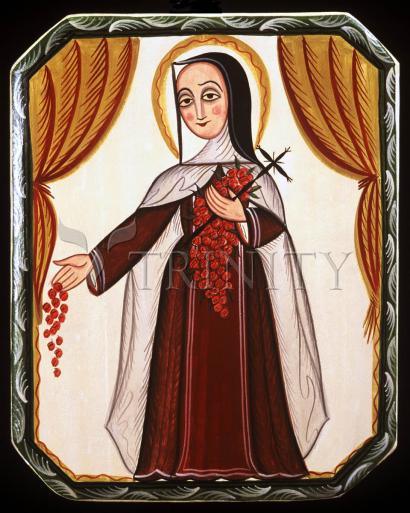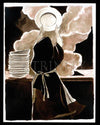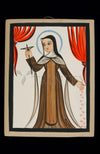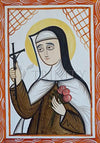Collection: St. Thérèse of Lisieux

-
Sale
Wood Plaque Premium
Regular price From $99.95 USDRegular priceUnit price per$111.06 USDSale price From $99.95 USDSale -
Sale
Wood Plaque
Regular price From $34.95 USDRegular priceUnit price per$38.83 USDSale price From $34.95 USDSale -
Sale
Wall Frame Espresso
Regular price From $109.95 USDRegular priceUnit price per$122.17 USDSale price From $109.95 USDSale -
Sale
Wall Frame Gold
Regular price From $109.95 USDRegular priceUnit price per$122.17 USDSale price From $109.95 USDSale -
Sale
Wall Frame Black
Regular price From $109.95 USDRegular priceUnit price per$122.17 USDSale price From $109.95 USDSale -
Sale
Canvas Print
Regular price From $84.95 USDRegular priceUnit price per$94.39 USDSale price From $84.95 USDSale -
Sale
Metal Print
Regular price From $94.95 USDRegular priceUnit price per$105.50 USDSale price From $94.95 USDSale -
Sale
Acrylic Print
Regular price From $94.95 USDRegular priceUnit price per$105.50 USDSale price From $94.95 USDSale -
Sale
Giclée Print
Regular price From $19.95 USDRegular priceUnit price per$22.17 USDSale price From $19.95 USDSale -
Custom Text Note Card
Regular price From $300.00 USDRegular priceUnit price per$333.33 USDSale price From $300.00 USDSale
ARTIST: Br. Arturo Olivas, OFS
ARTWORK NARRATIVE:
My Lord, I offer You all the actions I did today,
for the intentions and the glory of the Sacred Heart of Jesus;
I would like to sanctify the beating of my heart, my thoughts
and my most simple work by joining them to His most infinite merits,
to repair my faults by throwing them in the blaze of His Merciful Love.
O my God I ask You for myself and for those I love for
the grace to accomplish perfectly Your holy wish,
to accept for Your Love the joys and pains of this passage that is life
so that one day we can be reunited in Heaven for all eternity.
—Saint Thérèse of Lisieux
Her feast day is October 1.
- Art Collection:
-
Saints & Angels
Saint Thérèse of Lisieux (Born Marie-Françoise-Thérèse Martin, January 2, 1873 — September 30, 1897), or Saint Thérèse of the Child Jesus and the Holy Face, O.C.D., was a French Discalced Carmelite nun. She is popularly known as "The Little Flower of Jesus" or simply, "The Little Flower".
Thérèse has been a highly influential model of sanctity for Catholics and for others because of the "simplicity and practicality of her approach to the spiritual life". Together with St. Francis of Assisi, she is one of the most popular saints in the history of the church. Pope Pius X called her "the greatest saint of modern times".
Thérèse felt an early call to religious life, and overcoming various obstacles, in 1888 at the early age of 15, she became a nun and joined two of her elder sisters in the cloistered Carmelite community of Lisieux, Normandy. After nine years as a Carmelite religious, having fulfilled various offices such as sacristan and assistant to the novice mistress, and having spent her last eighteen months in Carmel in a night of faith, she died of tuberculosis at the age of 24. Her feast day is on October 1.
The impact of The Story of a Soul, a collection of her autobiographical manuscripts, printed and distributed a year after her death to an initially very limited audience, was great, and she rapidly became one of the most popular saints of the twentieth century. Pope Pius XI made her the "star of his pontificate". She was beatified in 1923, and canonized in 1925. Thérèse was declared co-patron of the missions with Francis Xavier in 1927, and named co-patron of France with Joan of Arc in 1944. On October 19, 1997 Pope John Paul II declared her the thirty-third Doctor of the Church, the youngest person, and at that time only the third woman, to be so honored. Devotion to Thérèse has developed around the world.
Thérèse lived a hidden life and "wanted to be unknown", yet became popular after her death through her spiritual autobiography. She also left letters, poems, religious plays, prayers, and her last conversations were recorded by her sisters. Paintings and photographs — mostly the work of her sister Céline — further led to her being recognized by millions of men and women.
Thérèse said on her death-bed, "I only love simplicity. I have a horror of pretense", and she spoke out against some of the claims made concerning the Lives of saints written in her day, "We should not say improbable things, or things we do not know. We must see their real, and not their imagined lives."
The depth of her spirituality, of which she said, "my way is all confidence and love", has inspired many believers. In the face of her littleness she trusted in God to be her sanctity. She wanted to go to heaven by an entirely new little way. "I wanted to find an elevator that would raise me to Jesus". The elevator, she wrote, would be the arms of Jesus lifting her in all her littleness.
Thérèse is well known throughout the world, with the Basilica of Lisieux being the second largest place of pilgrimage in France after Lourdes.
Born: January 2, 1873 at Alcon, Normandy, France
Died: September 30,1897 at Lisieux, France of tuberculosis
Canonized: May 17, 1925 by Pope Pius XI
Also known as: Therese of the Child Jesus, the Little Flower, the Little Flower of Jesus


















